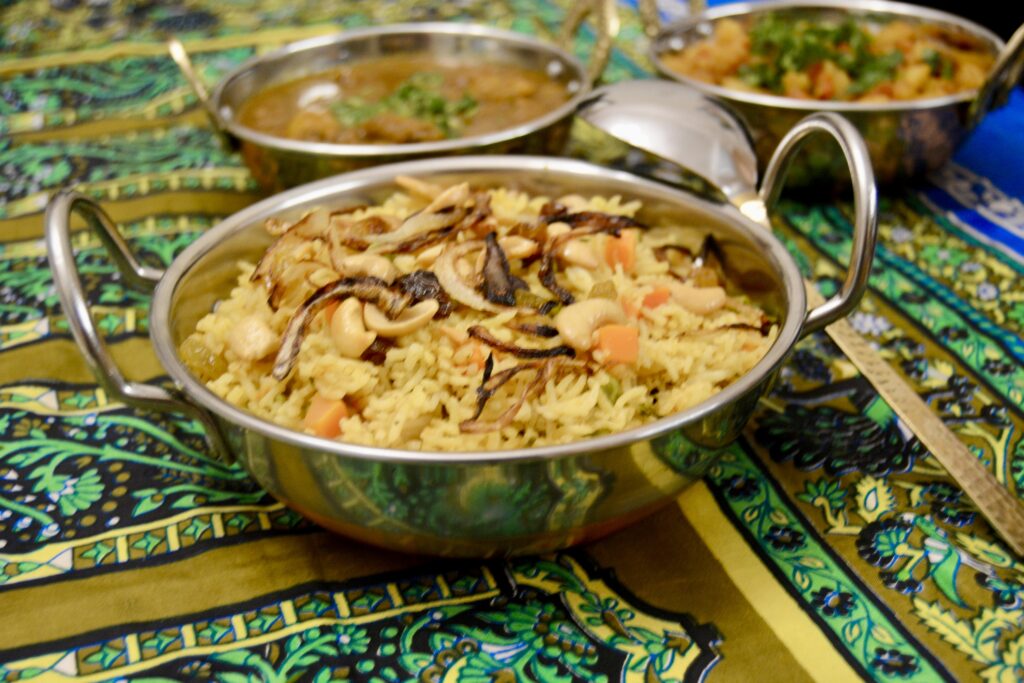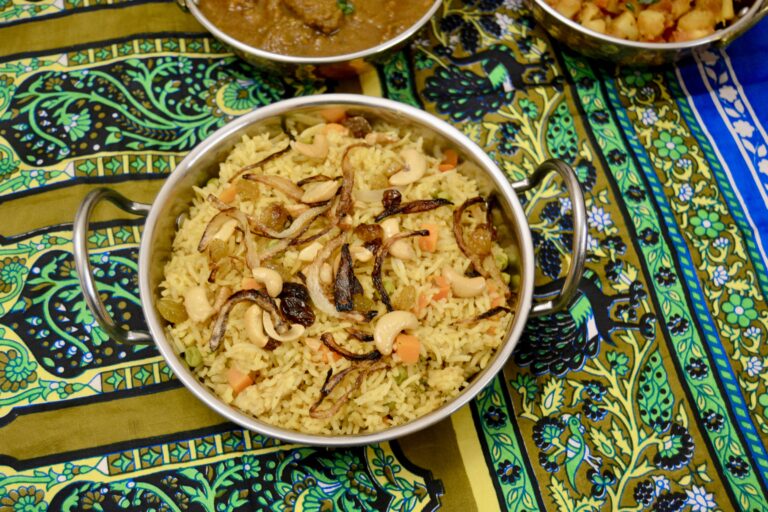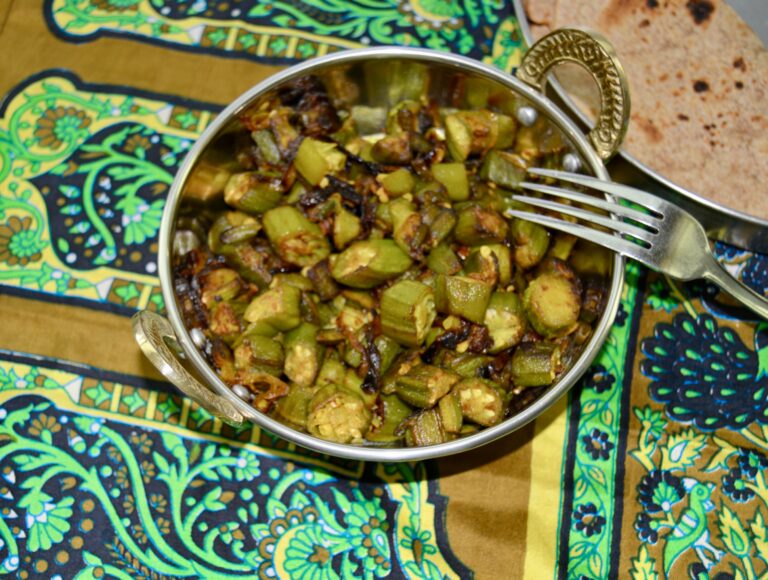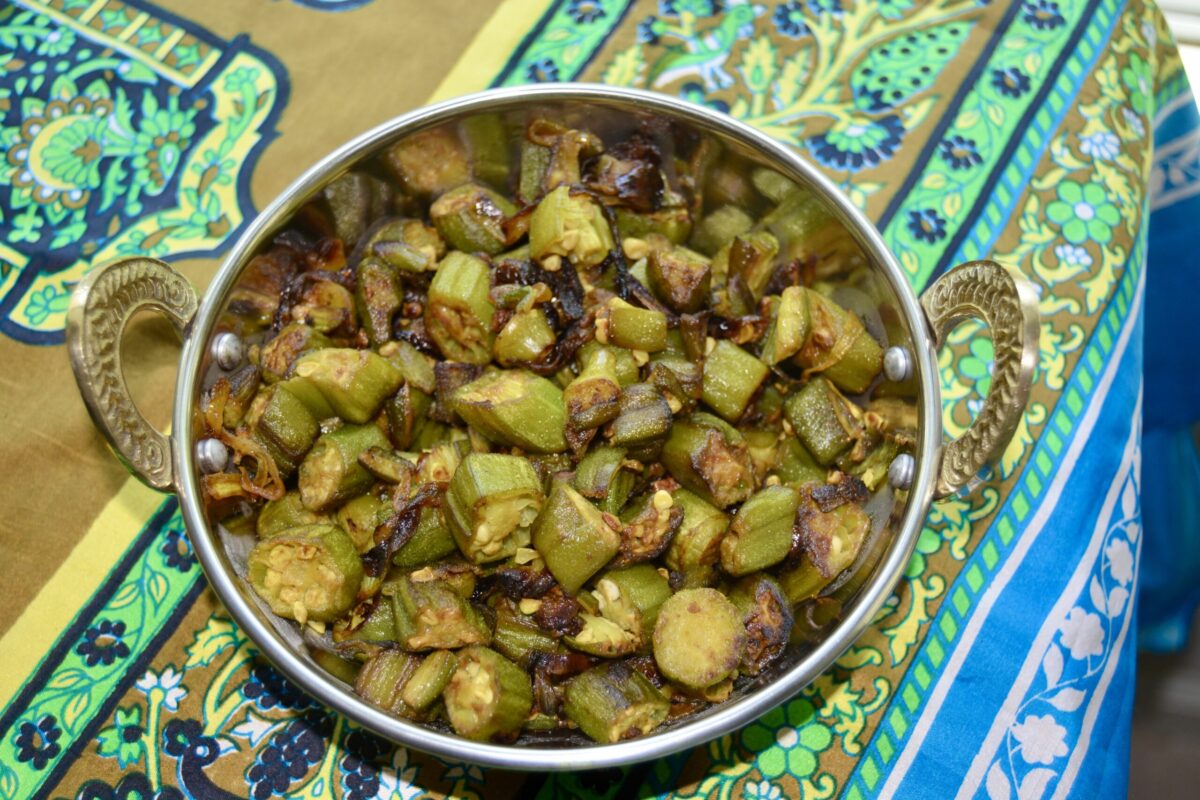My husband calls from his office at the Indian Air Force Headquarters, where he has been transferred. A colleague and his wife are driving in from Chandigarh and have an early morning flight from New Delhi. They have asked to stay with us overnight.
The armed services are a close-knit community, and you help each other whenever needed.
I take stock of dinner. Rosy (our cook) has already fixed the evening’s planned meat curry and sabzi. She will make fresh rotis when we are ready to eat. I decide to add a quick vegetable pilaf. Along with raita, pickles, and kuchumbar (Indian salsa), it would be a good dinner for hungry travelers. I head to the kitchen and call out to Rosy in her living quarters next to the kitchen. Together, we start fixing the pilaf and getting the table set for the two extra guests.
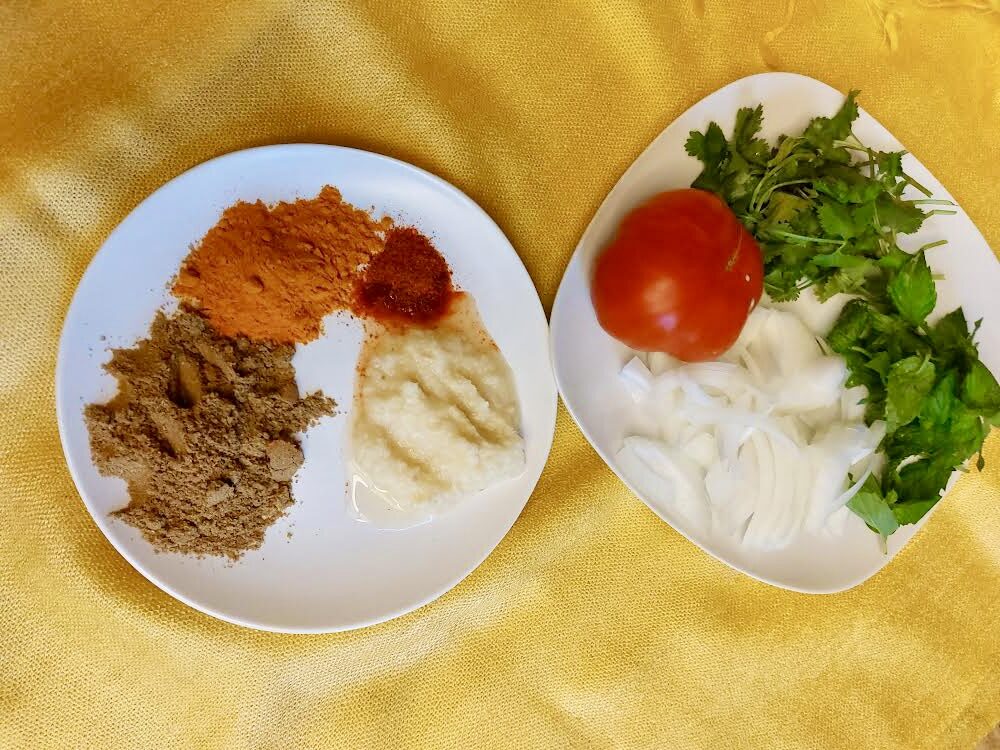
Vegetable Pilaf
Ingredients
- 3 cups Basmati rice (washed 4 times and soaked for 20 minutes )
- ¼ cup cooking oil (your choice)
- 2 medium Bay leaves
- 5 pepper corns
- 4 cloves
- 1 black cardamom
- 2 small green cardamoms
- 1 small cinnamon stick (about 1 inch)
- 2 whole Serrano green chilies (stem removed, slit half-way down the middle (optional))
- 2 medium onions (peeled and sliced thin)
- 1 tbsp fresh garlic paste (or you can use ready-made garlic and ginger paste)
- 1 tbsp fresh ginger past (or you can use ready-made garlic and ginger paste )
- 1 tsp turmeric powder
- 2 tsp coriander powder
- dash red chili powder (optional)
- ½ bunch fresh cilantro (pick leaves and a bit of the stem, grind to a paste or chop finely, about ¼ cup)
- 4 medium tomatoes (chopped or pureed coarsely)
- 1 cup mixed peas and carrots (I use a frozen pack )
- 3 cups vegetable broth
- Salt to taste
Garnish
- ½ sliced onion, cashew nuts, and raisins (all optional—or you could sprinkle the pilaf with some chopped cilantro/coriander leaves)
Instructions
- Heat oil in a large (6-quart) cooking pot over medium heat.
- Add whole spices and whole green chili. If you slit it midway down the center, it adds more heat to the curry. If you don't want that, just punch it once with a fork so it does not burst in the hot oil. Let it splutter for about 30 seconds, and then add the onions.
- Sauté the onions until they turn opaque and start to brown slightly at the edges. Stir occasionally so that the onions don't burn. About 4 minutes.
- Add ginger paste, garlic paste, and spice powders. Continue to sauté for an additional 2 minutes.
- Be sure to scrape the bottom of the pan to make sure nothing sticks and burns. Add the chopped tomato and cilantro.
- Cook, stirring frequently, until most of the moisture is absorbed and the oil starts to rise on the edges of the pan. About 10 minutes.
- Add the drained rice and carefully sauté it for about 3 minutes until the rice starts to turn opaque. Make sure it does not stick to the bottom of the pan and burn!
- Pour in the stock and water, stir, cover, and boil on medium heat. About 10 minutes.
- Add the peas and carrots and gently stir them in.
- Cover and cook on medium-low. When the water starts to evaporate and pits form on the top of the rice, reduce the heat to low. Cook another 5-6 minutes.
- Check a few grains of rice to see if the rice is done by pressing a grain between the thumb and forefinger. If it is still gritty, cover it and cook on low heat for 2 minutes more.
- Turn the heat off and let sit for 5 minutes. Fluff rice with a fork.
- Serve on a rice platter or serving dish and garnish with sauteed onions, cashews, raisins, or chopped fresh cilantro/coriander.
- This makes for a satisfying meal paired with raita. It also goes well with any curried lentil, or vegetarian or non-vegetarian curry, or with any style raita.
Notes
